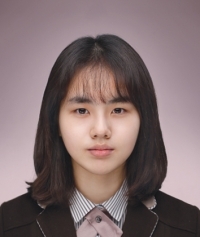Traditional hanbok is a hanbok that has the style and spirit of thought, custom, behavior, form, and technology that has been passed down from a long time ago, including skirts, jeogori, pants, and durumagi, which are our clothes. The traditional nature of the traditional Hanbok, which lasted for more than 1,600 years, is the longest in the world and can be seen as a mural of Goguryeo tombs and relics of Silla and Baekje.
If you draw the line of tradition from modern times, you can draw hanboks that appeared in the customs of Hyewon Shin Yoon-bok and Kim Hong-do during the Yeong, Jeongjo periods, and continue to the basic clothes of Goguryeo tomb murals (Yu, Go, Sang, Po) through the early Joseon Dynasty, Goryeo, and Tongil Silla. Furthermore, there is no visible data, but I think it can continue to the Gojoseon Line.
Hanbok is beautiful with a combination of straight lines and a little curves, especially women's clothes are neat and small, with a short jeogori and a generous skirt. Formal clothes and casual clothes are divided into men and women, adults, children, and seasons.
Adult men wore different clothes for gilye rite as formal attire, and different clothes for regular and ritual ceremonies. For example, in Gilrye, Gat was worn in an application, Jungchimak, and Durumagi, and in Garye, Samo was worn in a robe with a chest belly. In the ritual, a white coat or a scroll was worn and a hat was worn, and in the usual practice, separate mourning was carried out. He wore pants, jeogori, vest, and magoja as his casual clothes, and in summer, he wore red ginseng and a single vest. He used to wear gat or coffin on a scroll. In particular, durumagi was worn regardless of the season when going out and was not taken off when visiting other people's homes.
Adult women had ceremonial robes and ceremonial robes, while ordinary women had mourning accordingly, women had ceremonial robes. The robe was worn in green dang-ui with a crown or a headdress, while the robe was worn in scarlet or green wandsam with a headdress. The jeogori is three-legged, and the skirt is worn in either a skirt or a skirt. At this time, the jeogori was made of three pieces, including the sacks, inner jeogori, and outer jeogori. The skirt was worn with a rainbow to put volume into the outer skirt, and sometimes with a dashi skirt. The rainbow held the waist and the skirt held the bottom.
Modern times, more and more people have made modernized hanboks or fusion hanboks to make them comfortable. This kind of hanbok is known throughout the world, thanks to many idols such as BTS and BLACKPINK wearing hanbok.
In addition, some schools recently applied hanbok as a school uniform, allowing students to wear hanbok in their daily lives.
I think Hanbok will spread all over the world and become an article of excellent and beautiful clothing that is recognized all over the world.
다른 곳에 퍼가실 때는 아래 고유 링크 주소를 출처로 사용해주세요.


파주 지산중학교 1학년